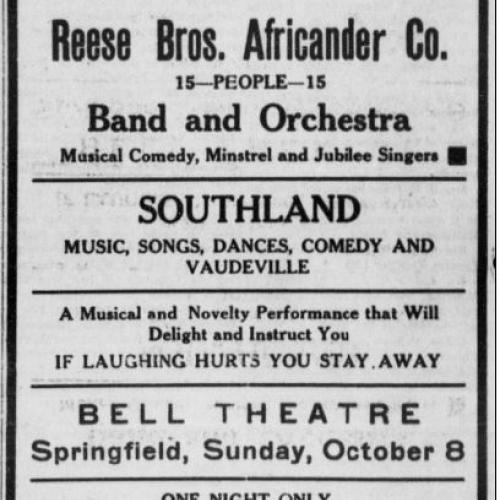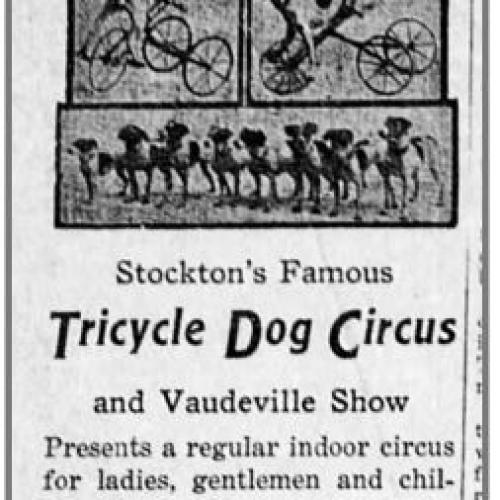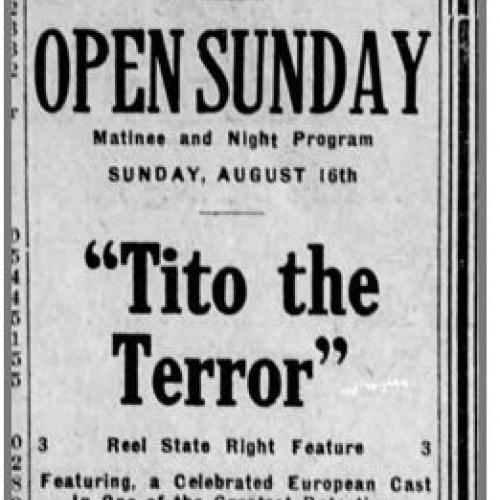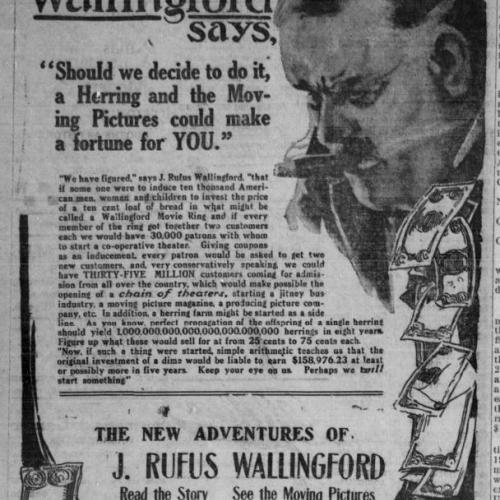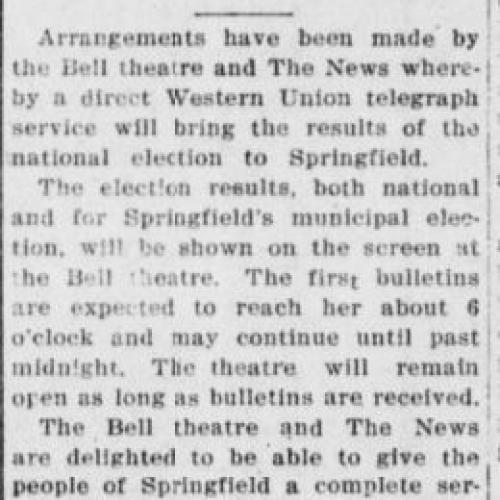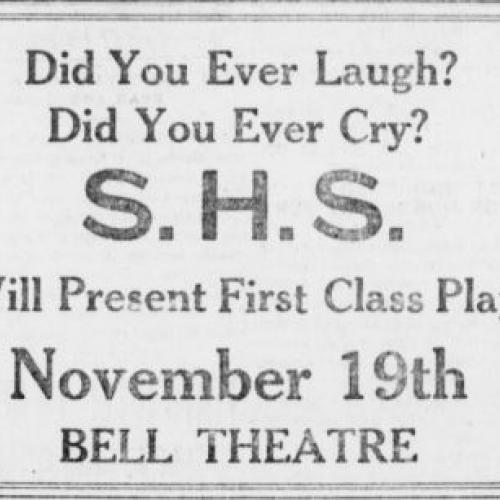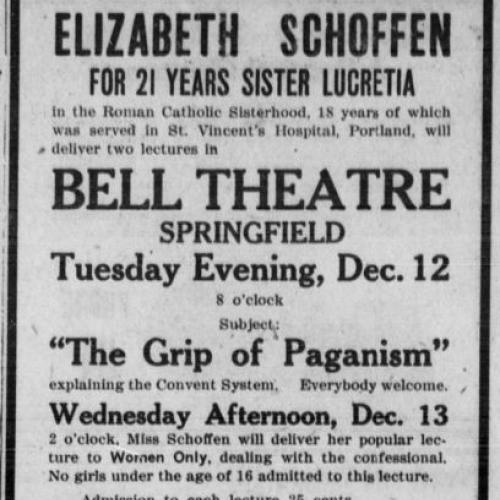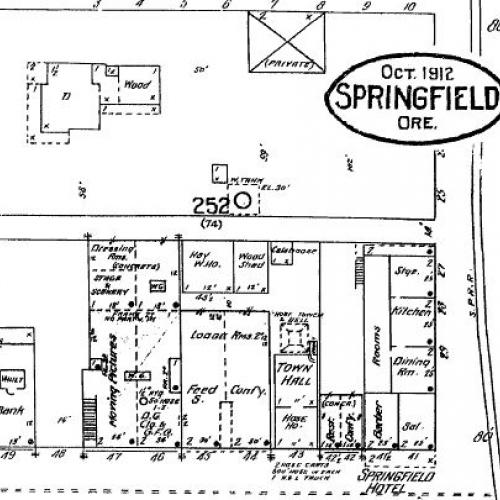The Bell Theatre opened in January 1912 at 208-216 Main St. in the ground floor of the Seavey Building, which J.A. (Jess) Seavey had built the previous year (1). The same space had originally housed the Independent theater. According to Sanborn Fire Insurance Maps, the theater space was long and narrow, measuring 34’ x 90’. It had at least 300 seats, since that number of men attended a lecture on social hygiene in the theater in 1916 (2).
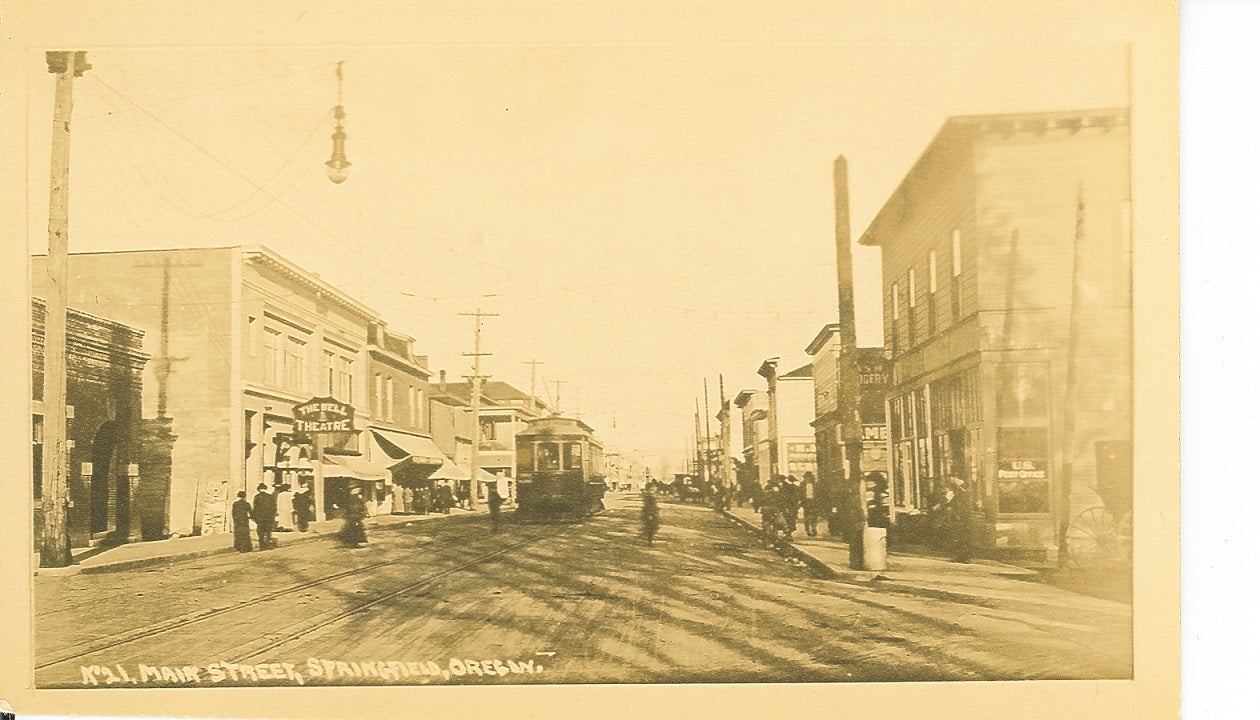
Prior to 1920, the theater was simple with none of the luxurious seats and decorations found in the larger Eugene theaters, such as the Rex. After the theater changed hands in 1917, for example, the new owner received only two motion picture projectors, chairs, and stage settings (3). The silent pictures did have piano accompaniment sometimes. Eunice Parker and Flaud Townsend were two local high school girls who were hired in 1915 and 1919, respectively, to play piano for Bell audiences. Admission ranged from 10-25¢ (4), and prices could go as high as 35-50¢ for special shows, such as traveling vaudeville troupes (5).
The Bell Theatre was a vibrant and dynamic part of the Springfield community. In addition to serials, educational shorts, feature-length films, and newsreels, the theater hosted vaudeville, live theater, music, dance, and other non-movie events such as bicycling dogs. The Bell was also a community meeting space, with political meetings, lectures, the Red Cross, the local high school band and theater group, and even election results (projected on the screen) all making use of the theater during this period.
In 1915 the Bell showed a Pathé serial based on the stories of the character J. Rufus Wallingford. The print tie-in ran in the Lane County News and encouraged readers to see the story “picturized” on Tuesdays and Wednesdays at the Bell (6). The Wallingford serial ran in several other theaters throughout Oregon in 1915, which suggests that the Pathé Exchange in Portland had a distribution deal in the region.
The various owners of the Bell promoted the theater to the Springfield community in ways that were typical of exhibitors in the 1910s. Small news items and advertisements ran in the Springfield newspaper early on, and larger ads with the weekly program ran regularly by 1918, despite the Bell being the only theater in town. W.J. White installed an electric revolving device to display movie posters outside the theater (7). Owners offered coupons, provided free movie tickets for students who earned good grades, and promoted itself as a “cool place to spend a Sunday afternoon,” with its eighteen electric fans and 600 pounds of ice.
The Bell Theatre changed hands rather frequently in the 1910s, reflecting the rapid changes in and uncertainty in local movie theaters during this period.
Wallace Potter ran the Bell from 1912-1914, according to the city directory. J.J. (Joseph) Bryan took over the theater sometime in 1914-1915, but by July of 1915, Bryan sold the theater to E.F. and F.A. Rudrauff, brothers who also owned a typewriter business in Eugene. Bryan said that he wanted to devote more time to running the Folly Theatre in Eugene, in which he had recently purchased a half-interest (8).
In May 1916, the Rudrauff brothers sold the theater to W.J. White, who also ran the Arcade in Cottage Grove at that time (9). White became the manager off and on for the next few years, with the theater changing hands four times until White eventually sold the business to J.H. Peabody in 1919 (10).
The theater continued to change hands through the 1920s, and continued to show current Hollywood films. The Bell made the transition to sound in early March 1930 with a showing of THE UNTAMED, starring Joan Crawford (11), but by the next year the theater closed for good (12).
